ECE Bicentennial Alumni Awards
The ECE Bicentennial Alumni Awards were bestowed in 2017, the year of the University of Michigan Bicentennial, to recognize ECE alumni who had not received an alumni award, instituted in 1992, during their lifetime.
The Department is delighted to recognize these individuals who, each in their own way, epitomize the Michigan commitment to excellence, service, and society-enhancing technology.

Stephen S. Attwood (1897 – 1965)
BSE ME 1918, MSE EE 1923
Stephen Stanley Attwood spent nearly 50 years of his life at the University of Michigan, filling every role from student to Dean. As Chair of the Department, he worked to keep it on the map in a time of rapid curriculum change and a competitive job market for faculty.
Attwood came to Ann Arbor as a student from Cleveland in 1914 to earn a bachelor’s in Mechanical Engineering. He returned in 1920 as an instructor in Electrical Engineering, and received his master’s degree in Electrical Engineering in 1923. He became a full Professor in 1938 and Chair of the Department in 1953.
During those years he completed the first edition of a textbook, Electric and Magnetic Fields, which was published between 1932 and 1967 in 3 languages. He pursued research in applying electromagnetic field theory to electrical problems.
Attwood was especially interested in investigating the effects of controlled surges on dielectrics, arcs, and cathode ray oscilligraphy. He did work for the Detroit Edison Company on natural lighting, and led the department’s standardization laboratory that was largely responsible for Michigan’s adherence to the Bureau of Standards.
During World War II, Attwood departed for Columbia University to work in the Wave Propagation Group, division of War Research. There he directed research on radio-wave propagation, and prepared a lengthy official report on the work accomplished.
As Chair, Attwood sustained and strengthened the department in a time of rapid curriculum change and strenuous competition for personnel. In particular, he provided guidance in the development of new programs in astronautical and atomic engineering.
From 1957-58 he was also Acting Dean of the College, and served as Dean from 1958-1965. In memory of his service, the College of Engineering awards the Stephen S. Attwood award, which is the highest honor awarded to a faculty member by the College. It recognizes “extraordinary achievement in teaching, research, service, and other activities that have brought distinction to the College and University.”
Attwood passed away in 1965.

Benjamin F. Bailey (1875 – 1954)
BSE EE 1898, MSE EE 1900, PhD EE 1907
Benjamin Franklin Bailey was an inventor, historian, and colorful writer who spent nearly his entire career in the Department of Electrical Engineering.
He received his bachelor’s, master’s, and PhD degrees from the University of Michigan in 1898, 1900, and 1907 respectively. He left Michigan only briefly before returning as an instructor and, ultimately, the department’s longest-sitting Chair.
Bailey took a noticeable interest in electronics at the age of 10, when he started building telegraph systems and simple telephones. A Detroit native, he took his first science class in high school and decided that engineering was his destiny.
After receiving his bachelor’s degree, Bailey spent a short period of time working at Detroit Edison Company with Henry Ford, where he was in charge of the steam machinery. He returned to Michigan in 1899 as an instructor at the Medical School in Electro-Therapeutics, quickly moving on to Professor of Physics before finding his final home in Electrical Engineering.
Bailey had strong ties to industry, and invented a number of electrical devices. The most important of these was the single-phase capacitor motor, completed in 1925, which rivaled a two-phase motor in efficiency – previously believed to be impossible. According to Bailey’s grandson, Detroit Edison approached Bailey to find out whether anyone could invent a motor that would enable refrigeration in the home. He did the calculus in his head and said it was possible, and then set to inventing it.
The motor was widely used, especially on electric refrigerators. Because of this invention, Bailey was honored as a Modern Pioneer in the American Frontier of Industry by the National Association of Industry at a ceremony held February 15, 1940, along with Henry Ford, founder of the Ford Motor Company and inventor of the Model T.
A few other important machines he either invented, or improved upon, include automobile ignitions and lighting, starting mechanisms for motors of high starting torque, electrolytic interrupters and rectifiers, a device for cooling completely enclosed motors, and a synchronous motor for electric clocks.
Bailey’s passion for engineering reached into his recreation as well. He loved boating, and because he couldn’t find a marine engine that he liked, he built his own.
The “Marquis Who’s Who in America” listed him as a patent expert, consulting engineer and director at the Howell Electric and Fairbanks Morse Motor Companies, and director and vice president of Fremont Motor Corporation. He wrote several books throughout his career, including: Induction Coils, 1903; Induction Motors, 1911; Elementary Electrical Engineering, 1913; and Principles of Dynamo Electrical Machinery, 1915.
Bailey was a member of the Society of Automotive Engineers and a Fellow in the American Institute of Electrical Engineers.

Charles F. Brush (1849 – 1929)
BSE Mining Engineering 1869 (note: there was no EE degree at the time)
Charles F. Brush is considered one of the primary innovators of commercial lighting thanks to his arc lamps. An inventor and entrepreneur, he overcame both technical and social obstacles to provide the framework for a utility selling electricity from a central plant to multiple consumers.
Born in Ohio, Brush made his first static electric machine at 12 years old. In high school, he built his first arc light. At U-M. Brush earned a bachelor’s degree in Mining Engineering, and went on to become an iron ore salesman. While he worked, Brush kept experimenting with electricity on his own, and built an improved dynamo. This hobby work turned out to be crucial for commerical lighting.
There was a lot of pushback against early electrical lighting – many oil industry investors feared that their demand would dry up, while others scoffed at the very notion of an oil alternative ever catching on.
Probably the biggest challenge, though, was swaying public opinion; many early adopters feared the bulbs and arc lamps because they were so bright that they hurt their eyes. As it turns out, many such customers would stare into the light sources for extended periods.
“One reason people stared was that they wondered where the light really came from,” Benjamin Bailey noted in his memorial for Brush. “They thought there must be some trick to it – the light must come from oil, and where was the oil supply?”
Brush was responsible for many design improvements to early arc lamps, and produced patents for the design of, and electrical generators (dynamos) for, the lamps. His arc lamps were deemed superior to all existing versions in 1878 by the Franklin Institute of Philadelphia, and became the standard for many decades.
He installed the first electric light system in the United States in Cleveland, Ohio, in 1879, and founded the Brush Electric Company in 1880. By 1881, his arc light systems could be found in New York, Boston, Philadelphia, Baltimore, Montreal, Buffalo, San Francisco, Cleveland and other cities, producing public light well into the 20th century. Brush’s system was lighting Broadway two years before Thomas Edison’s Pearl Street Station, the first central power plant in the U.S., began lighting New York.
Arc lights are still used in applications that require an intense source, such as searchlights or projectors.
In addition to his accomplishments with the arc lamp, Brush built the first automatically operated wind turbine generator in 1888 to power his Cleveland mansion. It was the first home powered by electricity in Cleveland. He also pioneered the first piezo-electric featherweight stylus, improved the process for extracting oxygen from liquid air, developed a more efficient battery, and later in life, wrote papers about the theory of gravitation.
Brush earned many awards throughout his lifetime for the contributions he made to practical electric arc lighting systems. He received the Edison Medal in 1913, a year before Alexander Graham Bell, and 3 years before Nikola Tesla. He received the French Legion of Honor in 1881 in recognition of his electrical discoveries. He also received the Rumford Prize of the American Academy of Arts and Sciences in 1899 for “the practical development of electric arc lighting,” and in 1928, he received the Franklin Medal by the Franklin Institute.
He was a member of numerous professional societies, including the American Institute of Electrical Engineers (now IEEE), the American Society of Mechanical Engineers, and the American Institute of Mining and Metallurgical Engineers, and a fellow of the American Academy of Arts and Sciencies, the American Physicists Society, and the British Academy of Arts. He was inducted into the National Inventors Hall of Fame in 2006.
Charles Brush established the Charles F. Brush Foundation for the Betterment of the Human Race with a $500,000 endowment. He was also chairman of the American Philosphical Society’s fundraising campaign, so named shortly before his death.
The public’s wariness of the new technology caused many obstacles, but Brush and others of the time managed to make electrical lighting a common commodity by the end of the 1880’s.
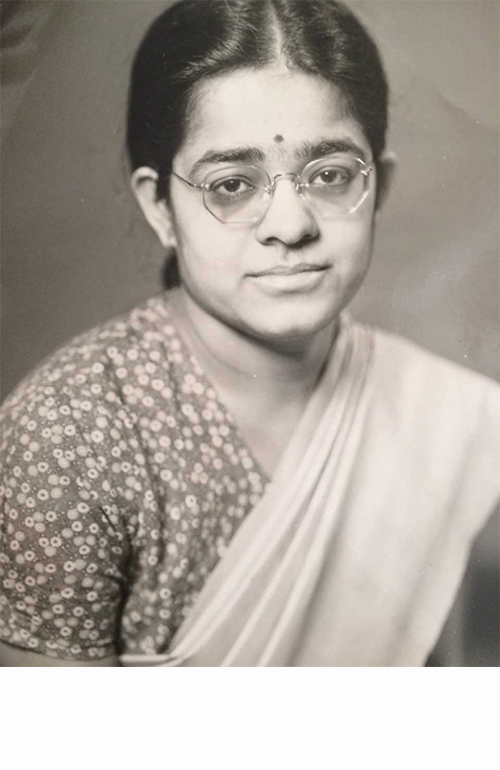
Rajeswari Chatterjee (1922 – 2010)
MSE EE 1949, PhD EE 1953
Dr. Rajeswari Chatterjee was the first woman scientist to pioneer the field of microwave engineering in India. She was also the first woman engineer from Karnataka, a state in the southwest region of India.
She traveled to study electrical engineering at the University of Michigan on a scholarship, traveling by sea out of Singapore for 30 days to reach the U.S.A.
She underwent practical training for eight months in the Division of Radio Frequency Measurements at the National Bureau of Standards in Washington, D.C., before studying with Prof. William Gould Dow for her PhD.
After graduating, she returned to India as a professor in the Department of Electrical Communication Engineering at the Indian Institute of Science (IISc). There, she began teaching and research in the area of Microwave Engineering, a first for India. With total dedication and the limited resources available at that time, they built up a Microwave Laboratory for experimental research in the area. Eventually, she went on to chair the department.
Chatterjee was just granted a posthumous honor, named one of the ‘first women achievers of India’ by the Union Ministry of Women and Child Development.
Prof. K.V.S. Hari, recent Chair at IISs, comments: “The Electrical Communication Engineering Department is honoured to be part of Prof. Rajeshwari Chatterjee’s journey in pursuit of excellence in engineering. Her stellar contributions to the department will be remembered with a lot of pride.”
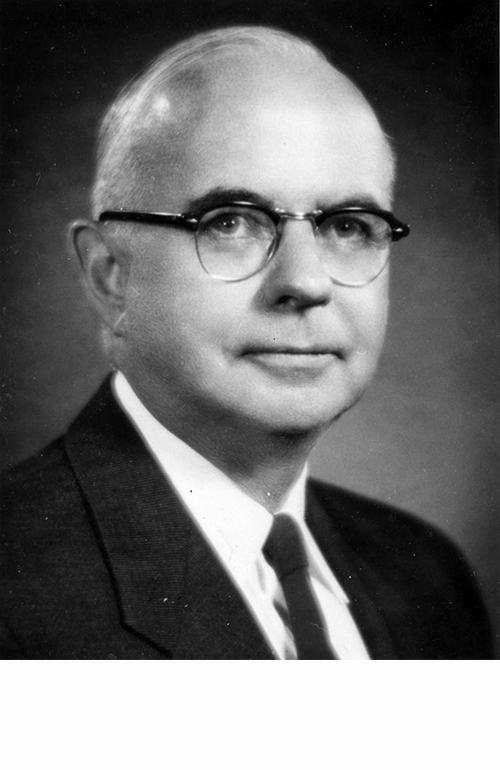
William G. Dow (1895 – 1999)
MSE EE 1929
The man who revolutionized how ECE does research, Prof. William Gould Dow was one of the department’s most influential leaders. His forty years at Michigan that began with graduate study in 1926 and ended as Department Chair in 1965 saw change that would shape the department’s growth through the rest of the 20th century.
A native of Faribault, Minnesota, Dow received his bachelor’s degree from the University of Minnesota. During World War I, he was a lieutenant in the US Army Corps of Engineers, with stints at Camp A.A. Humphreys, Virginia and the National Bureau of Standards. Upon leaving the Army in 1919, he took on a variety of sales and marketing positions, mainly selling electrical equipment for the Westinghouse Electric Corporation. (Dow would later say he was better off in two years at U-M, than all his years in marketing.)
Dow finally made his way to Michigan to pursue more education; little did he know at the time, he would stay for 38 active years of service: first as an instructor (1926), through to Professor (1945), and finally Chair (1957-64).
One of Dow’s first major projects was sponsored by the Fisher Body Division of GM and earned him several patents. He investigated how to use high frequency power for welding of sheet metal in automobile manufacturing; once the US entered World War II, however, it became more useful for making airplanes.
Dow’s tenure was only briefly interrupted in the 1940s, when went to work directly in support of the war effort at the Harvard Radio Research Laboratory. The laboratory was dedicated to finding effective radar countermeasures, including both jamming of enemy radar signals and determining the location of enemy radar installations. His work took him to London, where he narrowly avoided a V-2 rocket attack. The radar-jamming countermeasures Dow worked on were nearly 100% effective, and were credited with saving the lives of many Allied pilots.
Upon his return, Dow made a very important mark on the department by bringing military and government research contracts to the university.
Using the connections he had made during the war, Dow learned that the Army and Navy had begun a joint research program involving captured V-2 rockets in 1946. He arranged to attend the second meeting of the V-2 Upper Atmosphere Research Panel, and would remain a member of the panel until it ceased operation in 1960.
The panel required all of its members to be actively engaged in relevant research, and as his first experiment, Dow chose to measure ion and electron temperatures in the ionosphere under contract to the Air Force, and the experiment was successfully launched that same year. Another early experiment provided increased accuracy for estimates of the neutral density of the atmosphere, which is a critical factor for spacecraft to re-enter.
Dow was a charter member of the Rocket and Satellite Research Panel, a group of distinguished scientists and engineers who guided the nation’s space program through its infancy. The group of 27, including Dow and three other Michigan faculty, visited Washington in 1957 to urge the funding of scientific exploration in space. They asked for $10B over the span of a decade to explore outer space. Less than a year later, NASA was formed.
In addition to these activities, Dow was largely or solely responsible for creating and organizing at least 13 laboratories and research units throughout the College of Engineering, including the Solid-State Electronics Laboratory, the Environmental Research Institute of Michigan (ERIM), the Willow Run Laboratories, the Space Physics Research Laboratory, the Cooley Electronics Laboratory, and DRDA (Division of Research Development and Administration). Many of these units still exist and thrive today.
Dow was a pioneer in electronic engineering education. He introduced into the curriculum vacuum tube and nuclear theories, and the use of solid-state devices and computers. He introduced a course in Industrial Electronics which focused on the use of thyratrons and ignitrions in Michigan manufacturing industries. He also introduced new graduate courses in: Theory of High-Vacuum Electron Tubes; Gaseous-Conducting Electronic Apparatus; Microwave Electron Tubes; and Electron Beam Tubes. He also taught extension courses for engineers in industry during the evening mainly in Detroit between 1937 and 1942.
He wrote a classic textbook on electronics, Fundamentals of Engineering Electronics, 1937, which remained a standard for many years. During the mid 1950’s, he was active in establishing the Nuclear Engineering Department, and in incorporating instruction in Computer Engineering into the Electrical Engineering curriculum.
He worked during his entire career, for more than 60 years, to make graduate education in this country the most advanced in the western world, based on pure and applied research. He insisted that in defense and advanced technologies, the United States should be second to none.
When Dow retired from the chair position in 1965, he still had a 30-year career ahead of him – an amazing thing to say for a 70-year old! For the rest of the 1960s he had a part-time appointment as a Senior Research Geophysicist in the U-M Space Physics Research Lab. He would continue as an advisor to the Environmental Research Institute of Michigan, finally helping to establish it as an entity separate from U-M in 1972. He became a member of its Board of Trustees.
In 1981, he patented one of his hallmark accomplishments, a trochoidal nuclear fusion reactor, which is a device that theoretically could be used to produce electric power from nuclear fusion.
By the time he turned 100, Dow was still in his office at ERIM and his retirement office in the Nuclear Engineering department two days a week. Dow passed away in 1999, at the age of 104.To memorialize his contributions to education and research in the department, ECE later established the William Gould Dow Distinguished Lectureship. This is the highest external honor bestowed by the Department of Electrical Engineering and Computer Science. The Lectureship was established by donations from students and friends of William Gould Dow, and recognizes the accomplishments of external individuals who have made outstanding contributions in the field of Electrical Engineering and Computer Science.
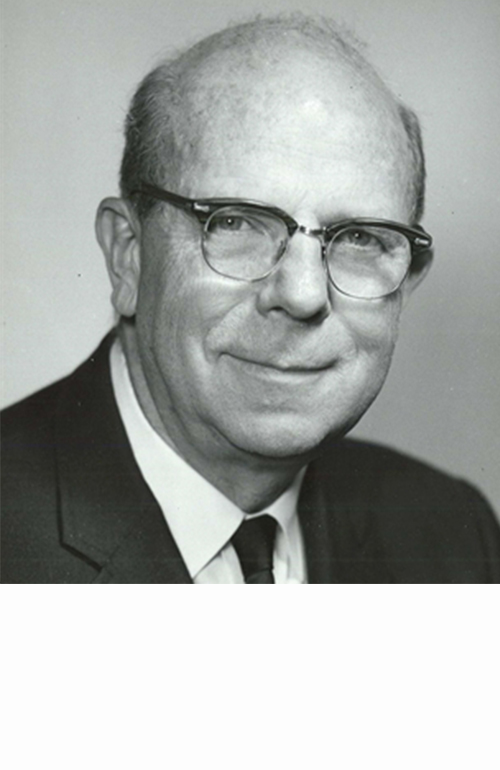
William L. Everitt (1900 – 1986)
MS EE 1926, Honorary Doctorate 1967
William Everitt “wrote the book” on both communications and radio engineering. He led a life dedicated to the teaching of electrical engineering, but also contributed heavily to research. His work helped expand the realm of electrical engineering to include both electronics and communications.
Everitt was born in Maryland in 1900, and drifted toward the Midwest through his schooling and career in education. He earned a BS in Electrical Engineering from Cornell in 1922, and then worked for two years at North Electric Manufacturing Company developing telephone systems in Cleveland, Ohio.
Everitt then arrived in Ann Arbor, where he taught courses while earning his master’s degree. Following completion of his master’s in 1926, he went on to the Ohio State University for his PhD. Here, he developed several fundamental radio technologies while writing his textbook, Communication Engineering, which was one of the first textbooks to include and format recent research in order to teach students.
Everitt researched many technologies, including radio altimeters for aircraft, Class B and Class C amplifiers, designs to couple transmitters to antennas, and antennas themselves.
Following work for the Army during World War II, Everitt headed the Department of Electrical Engineering at the University of Illinois, and in 1949 became Dean of the College of Engineering. He held this post until retiring in 1968.
Everitt earned an astonishing amount of accolades and held posts in numerous organizations, including:
- President, Institute of Radio Engineers
- Fellow, American Institute of Electrical Engineers
- Exceptionally Meritorious Civilian Award from the War Department
- Founding member, National Academy of Engineering
- IEEE Medal of Honor
- IEEE Centennial Hall of Fame
- 10 honorary doctorate degrees, including one from U-M
Everitt passed away in 1986.
d
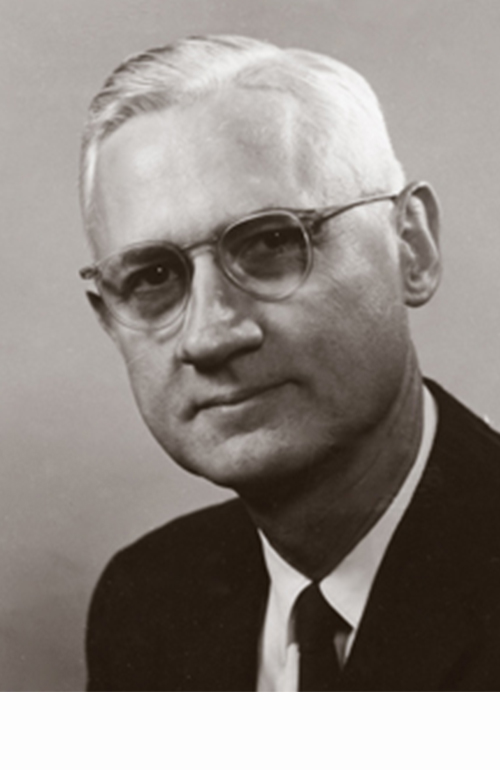
Arlen R. Hellwarth (1930 – 1974)
BSE EE 1925, MS Math 1936
Arlen Hellwarth was born in Celina, Ohio. He moved north to Ann Arbor to earn his bachelor’s degree in Electrical Engineering in 1925, and then worked for Western Electric Company and the Aluminum Company of America until 1930.
Hellwarth then returned to U-M to teach, and was made an Assistant Professor in 1931 as he studied for his MS in Mathematics, which he earned in 1936.
From 1933 to 1958, Hellwarth worked at Detroit Edison with roles both in the engineering and personnel departments, combining his technical and interpersonal abilities – the same he would use when he returned to U-M.
In 1958, became an Associate Professor of Electrical Engineering, as well as Assistant Dean and Secretary of the College of Engineering. He was deeply involved in undergraduate student affiars, where he made many strong friendships with students, parents, and industries that helped improve the engineering student’s college experience. He became a full Professor in 1965, and Associate Dean in 1967.
The College of Engineering Arlen R. Hellwarth Award is presented to undergraduate students who emulate Hellwarth’s compassion and have created positive change in the College and University.
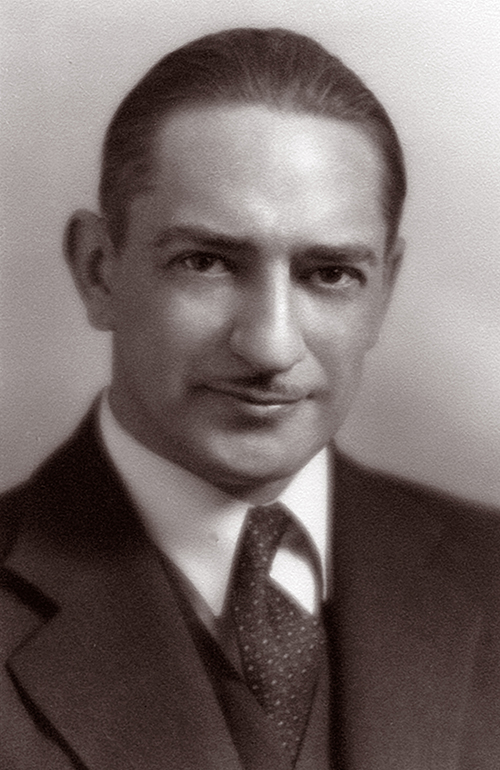
Arthur D. Moore (1895 – 1989)
MSE EE 1922
Arthur Moore was born in Pennsylvania, and quickly declared that he would study electrical engineering at six years old. He enjoyed playing with his cat – but especially the static electricity that built up in the cat’s fur.
Moore followed through with his plan and attended Carnegie Tech at 16 years old, where he graduated with a bachelor’s degree in Electrical Engineering. Afteward, Moore entered the Westinghouse Electric’s Graduate Training Program, and then began teaching at U-M in 1916.
Here, he became an Assistant Professor in 1920, earned his master’s in 1923, became Associate Professor in 1928, and finally a full Professor in 1931.
Moore, never forgetting the electrical experiences with his cat, made electrostatics his specialty. Electrostatics is the study of electric charges at rest and the interaction of their forces.
Through his career, Moore invented the hyrdocal, a hydraulic device used to simulate and measure heat, the dirod, a small generator, and devices to map fluids, such as underground gases.
Moore also held eight terms on the Ann Arbor City Council. He pushed for city-wide trash collection and established a landfill to improve sanitation and stop the spread of trichinosis.
Although Moore retired in 1965, he toured the world giving talks and demonstrations of electrostatic equipment. He also founded the Electrostatics Society of America in 1970.
The College of Engineering established an undergraduate award in his honor, called the A. D. Moore Award, which honors a sophomore or junior who has demonstrated academic excellence, leadership, and outstanding contributions to co-curricular activities.
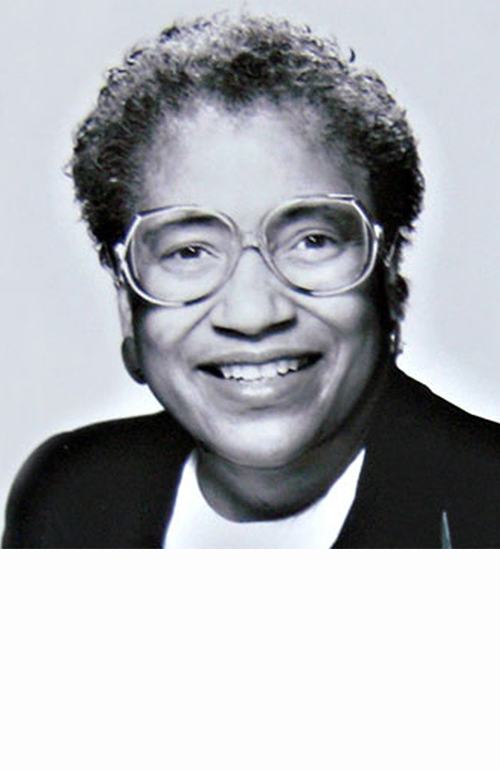
Willie Hobbs Moore (1934 – 1994)
BSE EE 1958, MSE EE 1961, PhD Physics 1972
Willie Hobbs Moore made history as the first African American woman at Michigan to earn a BS and MS in Electrical Engineering (’58 and ’61). She then followed up on this record as the first African American woman in the country to earn a PhD in Physics in 1972.
While Moore worked on her PhD under Prof. Samuel Krimm, she worked at KMS Industries helping analyze optics designs and at Datamax helping evaluate product performance.
Following her PhD, she continued to work as a research scientist at U-M until 1977, studying spectroscopy on proteins. In 1977, she became an assembly engineer at Ford, where she expanded Ford’s use of Japanese engineering and manufacturing methods to improve quality. She was named one of the 100 “most promising black women in corporate American” by Ebony magazine in 1991.
While she wasn’t working, Moore tutored children in math and science through her church and through Links Inc, a service organization.
The University of Michigan established the Willie Hobbs Moore: Aspire, Advance, Achieve Award to recognize individuals who have served as formal or informal mentors to students in fields related to Science, Technology, and Engineering. It is sponsored by the Center for Engineering Diversity & Outreach and Women in Science & Engineering.

Lyman F. Morehouse (1875 – 1947)
BSE 1897, MA 1904, Honorary Doctorate 1934
Lyman F. Morehouse pioneered many improvements to telecommunications while working at AT&T. Before this industry work, however, he pursued a career in education. After graduating from the College of Engineering with a specialty in electrical engineering in 1897, Morehouse went on to become Principal of Marquette High School, and then Assistant Principal of Detroit Central High School.
He earned his master’s degree in physics in 1904, and left school administration roles to teach physics at Washington University in St. Louis. He soon returned to the University of Michigan, this time as an Assistant Professor of Electrical Engineering.
In 1910, Morehouse joined AT&T as a transmission engineer in London, assisting in the installation of “iron-core” loading coils, which had recently been discovered to prevent time and amplitude distortion. These types of problems occurred in earlier telephone systems, especially as the distance grew between callers.
Morehouse quickly developed his own novel approaches to solving telecommunications problems, resulting in seven patents. These included ciphering and deciphering systems, telephone signaling equipment, equalizing telephone transmissions for better quality, and even a system that could transmit messages and pictures through telegraph in multiple colors.
Because of his accomplishments, U-M awarded Morehouse an honorary Doctor of Engineering in 1934. He eventually retired from AT&T in 1939, and died in Newark, New Jersey, in 1947.
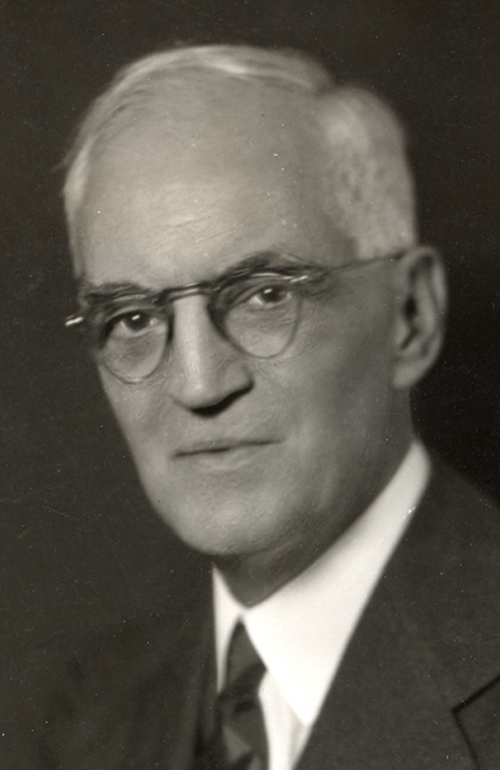
John C. Parker (1879 – 1953)
BSE ME 1901, MS 1902, MSE EE 1904
John Castlereagh Parker brought extensive experience in electric power transmission to Michigan’s Department of Electrical Engineering, gained from over 10 years of work with major infrastructure projects, and led the Department through some major changes in curriculum and philosophy.
Born in Detroit, MI, Parker received his bachelor’s degree in Mechanical Engineering in 1901, a master’s degree in Mathematics, Physics, and Engineering in 1902, and degree in Electrical Engineering in 1904 for work done in absentia.
Parker was hired as a tester for General Electric in 1902, and within two years he became an assistant to the engineer in charge of the Niagara Construction Company. Their major ongoing project was the design and construction of a hydraulic plant with the Ontario Power Company on the Canadian side of Niagara Falls. In 1905, he became Assistant to the Vice-President and Chief Engineer of the Iroquois Construction Co., and soon after that the head of engineering staff at the Rochester Railway and Light Company.
In 1915, Parker was hired as Chair of the Department. He was already familiar with campus, though, as he had been giving Saturday morning lectures at Michigan on electric power transmission. While Chair, he continued research on power transmission and pursued new work on the economic theory of engineering.
Under Parker, big changes took place in the curriculum and philosophy of the department. It was clear that electrical engineering was “growing up.” In the early days it was possible to get a full picture of the EE field within four years, right down to practical applications. The theory of EE advanced rapidly, though, and books and articles in the field were getting more and more mathematical.
At the same time the scope of the applications of electricity grew. Radio became important, and electronics as a science was developing. It was no longer possible to cover the entire field as had been done in the past in four years.
In response to these changes, the Department decided to cut down on overly-specific courses and strengthen foundational courses – a path favored by electrical companies. The number of courses in the late 1910’s actually decreased, briefly, in this restructuring place.
Parker returned to industry in 1922 to work for Brooklyn Edison Company, where he became Vice President. He is credited with overseeing the comprehensive reconstruction of the company’s transmission and distribution system, which involved novel work in the development of a low voltage network type of distribution service.
In 1938, Parker served as president of the American Institute of Electrical Engineers, an organization that would eventually become IEEE. He also directed and led a number of electrical companies and professional organizations in New York throughout the 1920s and 1930s, including time as Director of the New York and Queens Electric Light and Power Co., Director of the American Standards Association, and Director and Treasurer of Electrical Testing Laboratories.
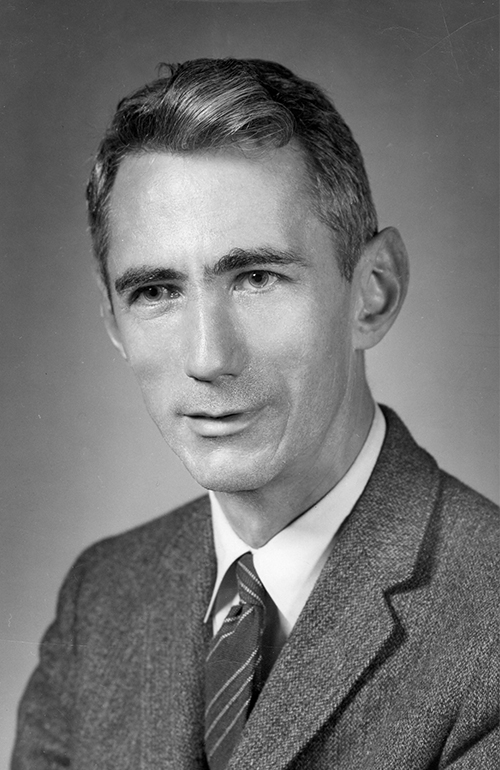
Claude Shannon (1916 – 2001)
BSE EE Math 1936
Claude Shannon’s landmark 1948 paper, “A Mathematical Theory of Communication,” earned him the title Father of Information Theory. He “defined in mathematical terms what information is and how it can be transmitted in the face of noise,” [Scientific American, 2001] and theorized the binary code of zeros and ones that makes all computing possible.
His work was world changing, impacting the future of communications, computing, data compression, statistics, natural language processing, cryptography, neurobiology, quantum computing, linguistics, and more.
Shannon was born April 20, 2016, in Petoskey, MI, during WWI, and grew up in Gaylord, MI. The son of a businessman and a teacher, his hero was inventor Thomas Edison (a distant relative). Growing up, he built a telegraph out of fencing material, radio controlled boats, and model planes of various designs.
Shannon was an undergraduate student at the University of Michigan during the years 1932 – 1936. He earned degrees in both Electrical Engineering and Mathematics, and was a member of Tau Beta Pi. Shannon said that Ralph Hartley’s paper, which he thinks he first read while a student at U-M, had an important influence on him.
As a graduate student at the Massachusetts Institute of Technology (MSE Electrical Engineering; PHD Mathematics 1940), he worked under computer pioneer Vannevar Bush operating an analog computer. His master’s thesis in electrical engineering, said to be the most important of the century, pushed computing into the digital realm by connecting the mathematics of Boolean algebra (and it’s reliance on 1’s and 0s) with the technology of switching circuits. His doctoral research in mathematics would provide a similar algebra for genetics.
Shannon’s first job after graduation was as a research fellow at the Institute for Advanced Study in Princeton, NJ, where he had discussions with John von Neumann and encountered Albert Einstein. He joined Bell Laboratories in 1941 to work on cryptography and re-control systems in the war effort. He shared ideas for a couple months with Alan Turing in 1943, and continued to develop his theory of information and communications.
Shannon published his master work, “A Mathematical Theory of Communication,” in 1948, at the urging of his supervisor, Hendrik Bode. Some have said the work “came as a bomb, and something of a delayed action bomb” in that it was extremely novel, it laid the foundations for the information age, and its effects are still felt to this day. This paper founded the field of information theory, which studies the fundamental limits of reliable communication in the presence of noise, and of data compression. Shannon’s theory allows us to talk about a common currency for information in “bits,” and laid the groundwork for cell phones, email, even the Internet.
Shannon’s work on cryptography was published in 1949 as “Communication Theory of Secrecy Systems.” In this work, he proved that unbreakable cryptography was possible.
Shannon died February 24, 2001 in Medford, MA.
More articles
Claude E. Shannon Statue Dedication at the University of Michigan
U-M Shannon Centennial Symposium Celebrates the father of information theory
Claude Shannon: Information Icon
Claude Shannon centennial celebrants recall U-M grad’s advances, societal impact
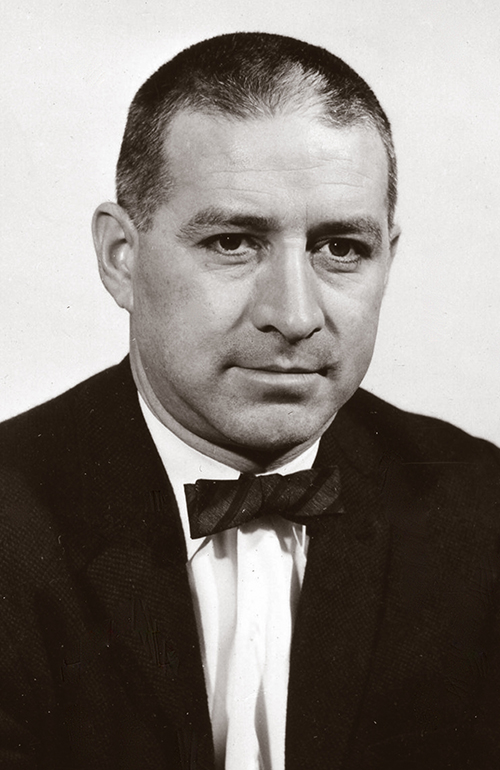
Nelson W. Spencer (1918 – 2002)
BSE MSE EE 1941 1953
Nelson Spencer was former chief of the Laboratory for Atmospheres at NASA/Goddard Space Flight Center.
After earning a degree in Electrical Engineering in 1941, Spencer served as a naval officer and spent time at Harvard and MIT before returning to Michigan complete his master’s degree in 1953. He soon led the Space Physics Research Laboratory (SPRL) and, after becoming a Professor, left in 1960 to continue research of the upper atmosphere at NASA’s Goddard Space Flight Center. Spencer served as chief of the Laboratory for Atmospheres at Goddard until his retirement in 1986.
Spencer contributed many discoveries about our own, as well as other planet’s, atmospheres. In the 1950s, Spencer led rocket flights that collected data on the ionosphere, helping inform old theoretical models and confirm new theories. In the 1960s, Spencer built on this work with upper atmosphere satellites that measured thermospheric winds and temperatures.
During this time, Spencer organized the San Marco international satellite program, in collaboration with Italy. In an obiturary, colleague Donald Hunten describes how this program intertwined his many interests. “He loved wine and music, especially Italian opera. He loved Italy, the country, the wine, the food and the people; his participation in the San Marco program facilitated this enjoyment.”
In the 1970s, Spencer worked with Richard Goody and Hunten to gain approval for NASA missions to study the upper atmospheres of Venus and Mars to figure out why they formed differently from Earth’s. This led to the Pioneer Venus project, which held launches in 1978 and succesfully collected temperature and atmospheric compostion of Venus.
Spencer teamed together theorists and experimentalists, led the adoption of dedicated mission computers, and helped begin the study of anthropogenic effects on the atmosphere.
Hunten ends Spencer’s obituary with the following:
“He was tough but very human, down to earth and never phony; he did not care if he was liked. He was hard to work for but never impossible. Whatever he did he wanted to do well. Nelson Spencer’s colleagues, collaborators, and family remember him with respect and affection.”
 MENU
MENU 
